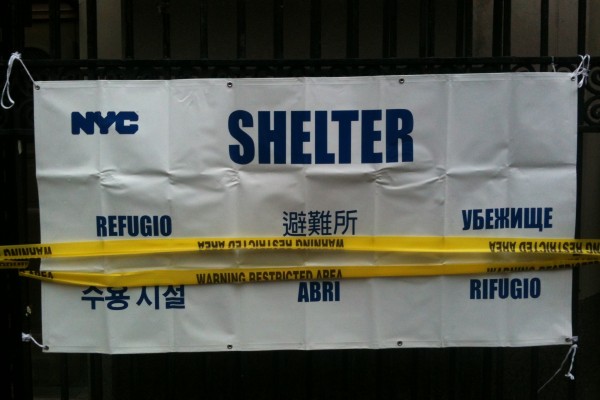A few days ago I saw posts on Facebook that a community run relief hub at 489 Midland Avenue in Staten Island is being evicted by the city, with an ask to call the Public Advocate's office.
The next day, I received an email forwarded to me from a friend who knows I know people at Occupy Sandy. It was forwarded from a staff member for the Public Advocate's office asking for more details about the hubs and why they are being shut down. They were concerned and want to help.The phone number for Aiman Youssef, mentioned in the Facebook post about 489 Midland, didn’t seem to be working. I wondered why they were asking us, instead of asking the Mayor directly, or better yet going to Staten Island to find out more themselves.
Yesterday, I got on the subway and the ferry and the Staten Island subway and got off at the closest stop to Midland Avenue. I saw rows of empty houses, people cleaning them out, and piles of pieces of houses and people's lives. I came to 489 Midland and tables with clothes and other supplies, a big sign that said Free Food, and a colorfully painted van giving out more food and supplies - it is a church group from Rochester. Volunteers with yellow T-shirts saying Yellow Team.
I was there for ten seconds when a reporter with a camera walked up to a gentle looking middle-aged man standing eating mashed potatoes and meatloaf off a paper plate. The reporter asks him what organization he is with. He said no organization, "just people." They asked him again, is it a church? He's says "people, churches, everyone." They asked him where Occupy Sandy is and he directed them to a building a few blocks away, and they left.
I walked up and said hi, and said that I found it funny that some people can't understand why you aren't with a group. He told me that the day after the storm they asked him who he was and he answered, "I am a man with a half-table." I asked if they are trying to shut him down. He said they tried, but they couldn't. I asked why they would shut him down, he said that he thinks they are embarrassed, that they were not providing help themselves.
He told me proudly about Thanksgiving, saying that they had planned for 800 but had 4,000 show up. He said, "turkey's were coming from everywhere." Today the group came from Rochester, yesterday from New Jersey. He was worried about the kids who lost everything, and he was trying to collect them toys. He did not seem worried about being shut down. He said, "How can you tell a person not to help another person. You can't."
I was about to leave and thought I still wasn't sure if this was the man the Public Advocate's office was looking for. I stuck out my hand and said "I'm Amy." We shook hands and instead of giving me his name he asked me if I was on Facebook, then pulled out his phone and searched for me. I said goodbye and as I walked away I accepted the friend request from Aiman Youssef.
I walked a few blocks passed the "restricted use" signs and saw a community center with tables, a few white tents like at a fair, a sign that says "free store" and some men BBQing and handing out food. I got closer and there was a phone charging station and guy from a phone company standing at the table. He smiled and said, "I can charge your phone. And they are Occupy Sandy." I went inside the gate and noticed some familiar faces.
Conversations are happening. I hear there has been difficulty getting information out to neighbors and tensions involved in any diverse community, especially when emotions are high and resource scarce. Volunteers and community members in the free store are discussing what it means to take what one needs. A friend is brainstorming with me about how to communicate needs and organize systems with so many sites, Occupy, other sites, and everything in between.
A few hours later I received another email forward from the Public Advocate's office with information from the Mayor's office. It denied that the sites are to be evicted, and explains that they are going to be condensed. It said that the city is concerned for the safety of volunteers, that hubs will be moved inside for the winter, and that volunteer hubs will be combined with city hubs. It says that the need for food and clothing has dropped and "the city would like to get things back to normal."
What I saw today on Midland Avenue, is that everyone needs so much, because they have lost everything. Things are not and cannot get back to normal. When you walk and see house after house that are uninhabitable and business after business that are closed, the most normal thing to come across is a group of tables with household items, clothing and food. With donations coming in more slowly, the rest of the city forgetting about the storm, these hubs are literally life savers to meet people's basic physical, emotional and social needs.
A month ago, the government was unprepared for the seriousness of the storm or unmotivated to help those in the most vulnerable, far from the power centers of city and state. Local communities and Occupy Sandy have been almost universally praised for immediate and respectful mutual aid efforts. They say now that what people need most is food and safe, healthy, warm, places to live. The government and large relief organizations who intend to help must prioritize respectful on-the-ground communication and community buy-in when making their logistical plans. The leaders of Occupy Sandy who are working in places like Staten Island, and men with half-tables on the sidewalk, are not only the heroes of this disaster but the experts.
